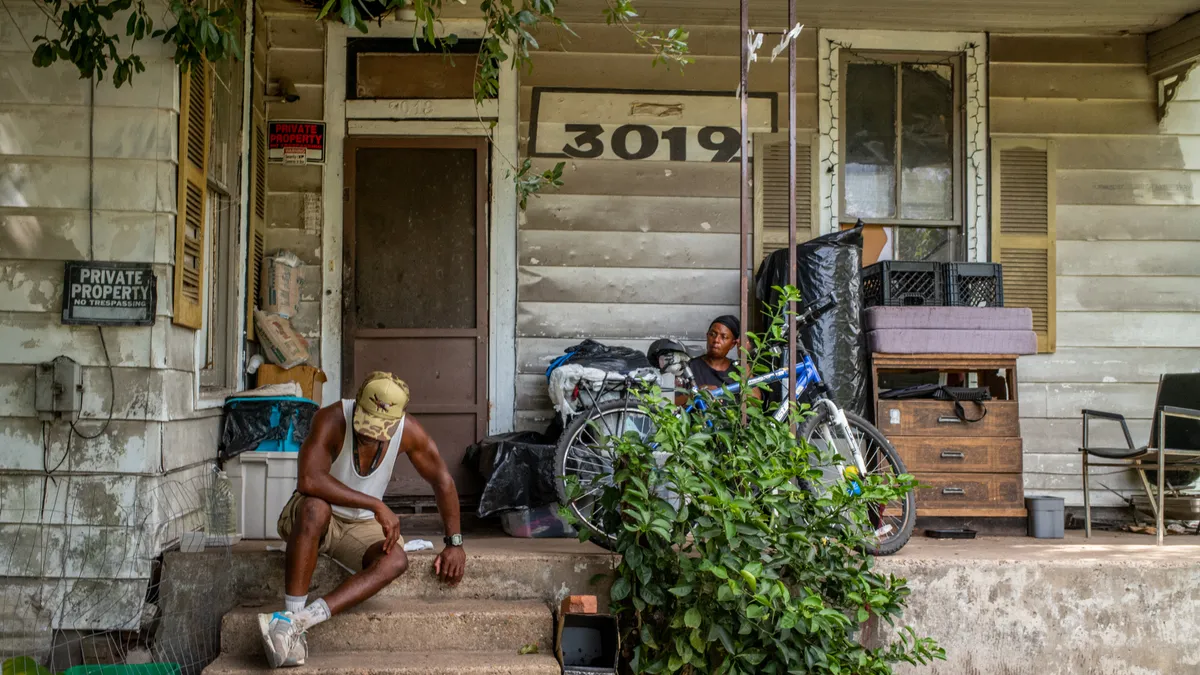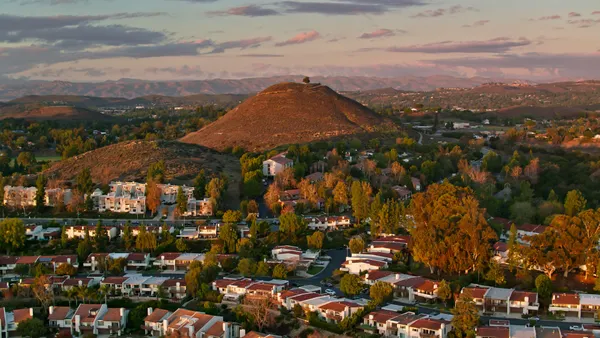Dive Brief:
- This summer’s extreme heat, which continues to threaten many communities, underscores the need for more and better local early warning and response systems, said Kristie Ebi, a professor at the University of Washington Center for Health and the Global Environment, at an August SciLine media briefing from the American Association for the Advancement of Science.
- Calling heat-related deaths “preventable,” Ebi said that “people don't need to suffer and die in the heat. We've got ways to manage that much better than we're doing today.”
- The federal government and state governments should better facilitate knowledge-sharing between localities developing extreme heat plans so each community doesn’t have to “start from scratch,” Ebi said. She also advocated for building codes that minimize the urban heat island effect by, for example, requiring green or cool roofs.
Dive Insight:
One of the most significant dangers of persistent extreme heat is that it raises our core body temperature, Ebi said, “and that needs to be maintained within a pretty narrow range to protect ourselves and our organs.”
It takes about 24 hours for heat to build up inside the body, which is why people typically don’t start dying until a day into a heat wave, she said. That’s why high nighttime temperatures are so dangerous — they don’t give people a chance to cool down.
Core body temperature isn’t just dependent on how hot it is outside, it also depends on the activity a person is engaged in, Ebi said. Someone resting in the shade will likely have a cooler core body temperature than someone doing strenuous labor in the sun. “There's lots of ways that people can help keep that core body temperature down,” she said. “It doesn't have to be with air conditioning.”
Ebi referred local officials to heat.gov, a web portal for the National Integrated Heat Health Information System, a collaboration of federal agencies that includes the Centers for Disease Control and Federal Emergency Management Agency. “These are really important advances, to have the information of what you could do with regulation at the local level,” she said of federal agencies collaborating in ways they haven’t previously.
Philadelphia, Detroit and Washington, D.C., are cities with good early warning systems for heat, Ebi said. “Heat wave early warning and response systems save lives,” she said. “We know that they work.” While these systems may be uncomplicated in theory, they require excellent coordination, she said. “You need, of course, your EMT, the police, the fire department, who looks after elderly care institutions, who goes out and works with the unhoused, who speaks to the redlined districts,” she said. “You start ... and realize it's a really massive coordination effort to try and keep everybody aligned, make sure that the services are available, [that] information gets to the most vulnerable.”
It’s also very difficult to measure deaths from extreme heat because of the lengthy, multi-jurisdictional process required to confirm a person died due to high temperatures, Ebi said. The U.S. significantly underestimates heat-related mortality, she said, and deaths are likely only going to rise in coming decades, especially if communities don’t mitigate and adapt to climate change.
Human-caused climate change has its fingerprints all over this summer’s weather, said Andrew Pershing, Climate Central’s vice president of science and director of attribution science and climate fingerprinting, also speaking at the media briefing. “Our analysis shows that climate change is having a detectable, quantifiable impact on today's temperatures,” he said.
Pershing pushed back on defining the unusually high temperatures as a “new normal.” He argued that this phrasing implies the heat is an “ordinary” or “natural” occurrence that communities can simply get used to. “That's not going to happen because every year we expect to get warmer and warmer,” he said. “That's what it means to live on a warming planet.”
If the world significantly cuts greenhouse gas emissions, temperatures will continue to rise in the near future but eventually level off, Pershing said. That picture very much shifts if humans continue burning fossil fuels at the rate we currently do, he said.
Under a high-CO2-emissions scenario, by 2100, Newark, New Jersey, could feel like Augusta, Georgia, Pershing said. “Chicago ... might someday feel like Montgomery, Alabama ... Then Phoenix, poor Phoenix, has to go to Al-Mubarraz in Saudi Arabia,” for comparable temperatures it could reach in less than a century, he said. “You really are having to jump to a very, very different climate than what Phoenix currently has.”












